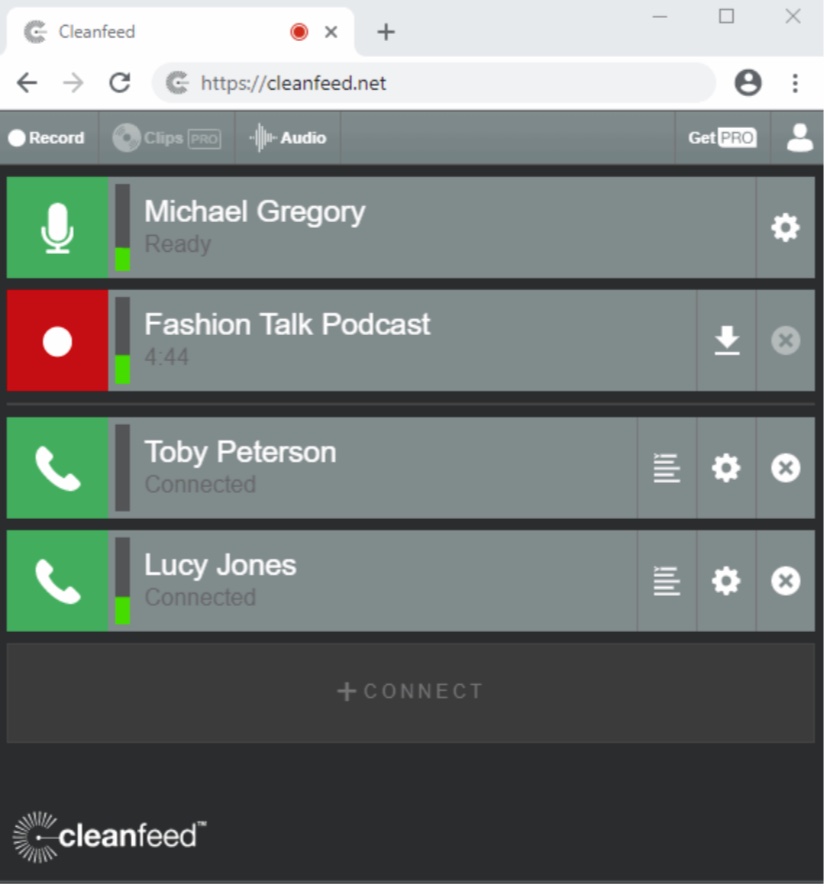Cleanfeed: A Solution for Remote Audio during COVID-19
by Ben Golden, University of Wisconsin-La Crosse
As the COVID-19 pandemic continues to force us out of our theatres and into our makeshift home studios, one of the most difficult problems to solve is how to rehearse and perform together without the lag and inconsistency of video calling. While meetings and even classes can overcome a few lost words or blurry video, it can bring music lessons or performances to a screeching halt.
At the same time, we have learned that respiratory viruses spread well in enclosed spaces - particularly when people are singing or speaking loudly—which perfectly describes theatrical performances and rehearsals. At the University of Wisconsin La Crosse, we have been able to teach, rehearse and perform virtually and safely using a few key pieces of technology.
After a few weeks of virtual vocal lessons via Zoom last spring, our musical theatre instructor, Kathryn Moran, approached me about audio streaming options. The built-in feedback suppression, compression and latency in most video programs makes singing with someone almost impossible. After reviewing a number of streaming programs, I settled on Cleenfeed— a multi-track, multi-party audio system. Hopefully my leg-work can save you a step or two.
Browser-based
One of the primary requirements for a program was ease of use. I was hoping to avoid programs that would have to be  downloaded and installed. Cleenfeed is entirely browser-based, which allows any student with a computer to use it. They do need to create an account with cleanfeed on their first use. To use all of the features, one host will need a “pro” license which runs $22/month for educational institutions.
downloaded and installed. Cleenfeed is entirely browser-based, which allows any student with a computer to use it. They do need to create an account with cleanfeed on their first use. To use all of the features, one host will need a “pro” license which runs $22/month for educational institutions.
Much like a Zoom call, the host sends a link to to a Cleanfeed “call” and others simply follow the link to join. All members appear as a track in the browser window. In practice, we generally use Cleenfeed simultaneously with a fully muted zoom call, to allow students and faculty to see each other.
Clear, low latency audio
In initial testing with a simultaneous Zoom call, Cleanfeed was more consistent with lower latency than Zoom—even with Zoom’s new “use original audio” setting enabled. The program uses the Opus codec and offers bitrates up to 320kbps. In practice, the audio is just as clear as a high quality MP3 recording. Latency is still present—it’s not magic—but it is manageable. It works flawlessly for dialogue. We even observed that when all parties were using a wired internet connection, the latency was low enough to allow for some live, simultaneous singing.
We were able to purchase large-diaphragm USB mics using CARES Act funding that we checked out to musical theatre students to further improve sound quality. While not perfect, this works fairly well for private vocal lessons and small groups - where our instructor can accompany student vocalists. Making music with someone miles away—the future has arrived!
Multi-Track
Cleenfeed allows for unlimited (theoretically) stereo or mono inputs. In addition to multi-track streaming, each track can be individually recorded. We plan to use this feature when we stage (zoom-stage?) our first fully virtual department production in February. The multitrack recording will allow us to normalize vocal levels and add effects in post-production. You can also route the audio to another program for live productions, although we have not used that function.
Go bags
Cleanfeed and Zoom were also the Plan B for the socially-distanced radio plays that we filmed in our theatre this fall. Thankfully, as I write this we have successfully recorded those productions with no positive tests among our cast, crew or faculty. Still, we planned a Zoom production in parallel, complete with “go bags” of props, costumes, microphones and clip- lights that could be dropped on the doorstep of a quarantining cast member. Count that among the many things we couldn’t have envisioned ourselves doing just a few short months ago. Best of luck with your virtual rehearsals and socially-distanced productions in the coming months! [ ]
Ben Golden is the Lighting and Sound Supervisor at the University of Wisconsin-La Crosse and a Member-at-Large in the Northern Boundary Section.
